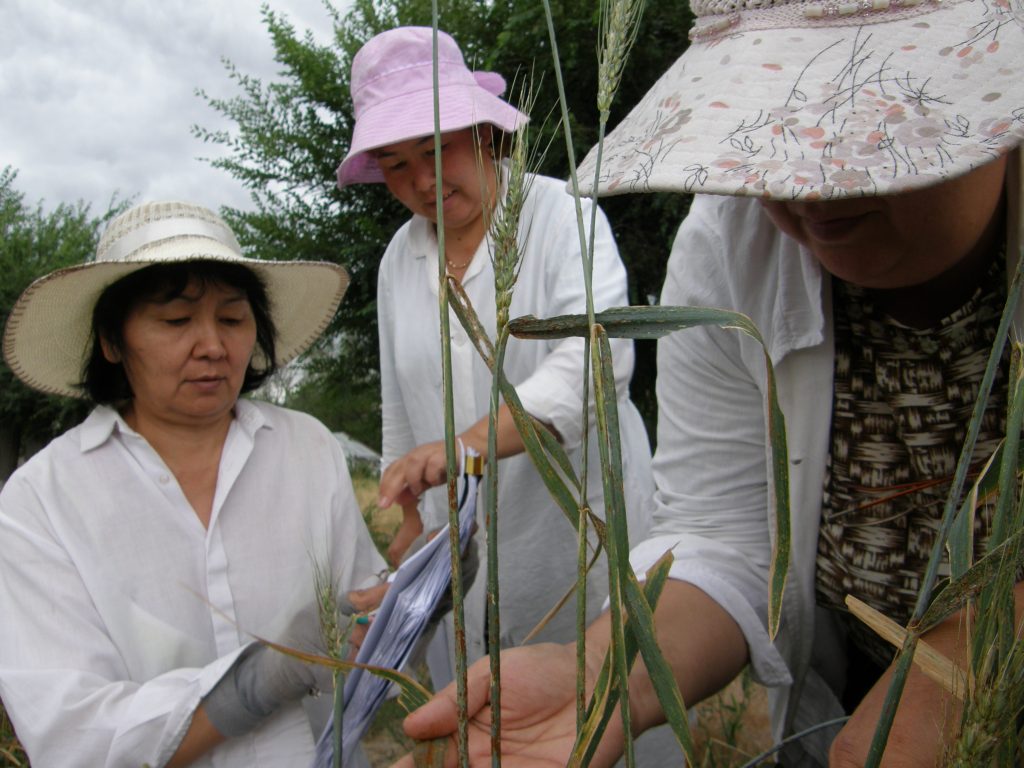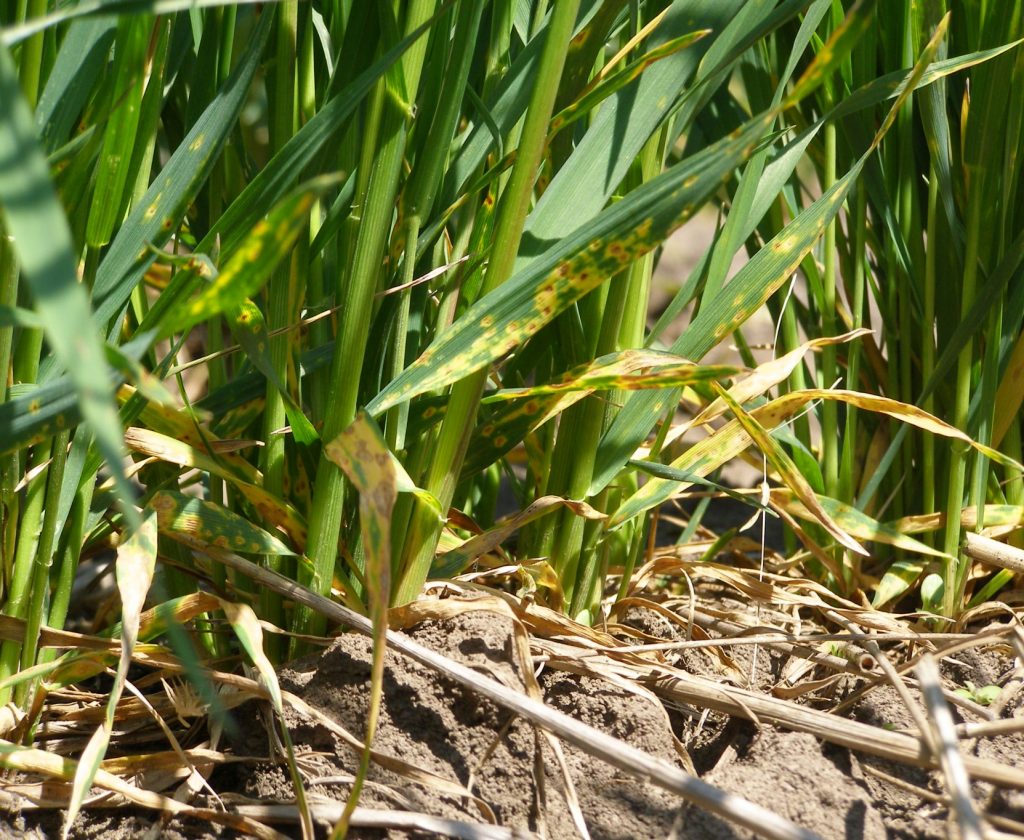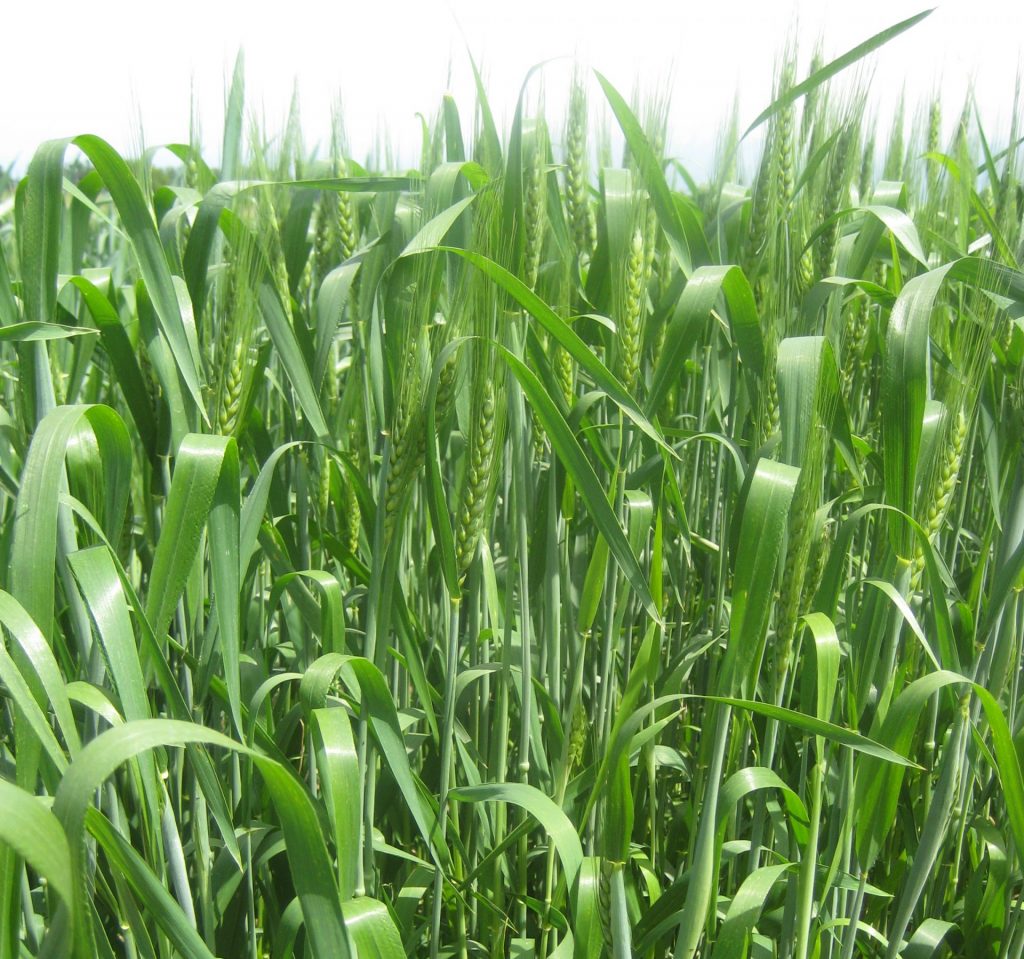Genome-wide association study puts tan spot-resistant genes in the spotlight
CIMMYT’s collaboration with scientists in Kazakhstan finds a new, promising source of genetic resistance to tan spot, a damaging wheat disease
By Madeline Dahm

Although tan spot disease, caused by the fungus Pyrenophora tritici-repentis, may be less well known than the more ‘famous’ pathogens of wheat, such as rust and blast, its potential to become a major threat to wheat-growing regions worldwide is a serious concern.
In Kazakhstan, one of the main wheat growing nations in Central Asia, farmers have struggled with tan spot epidemics since the 1980s. During epidemic years, Kazakh farmers have reported losing nearly half of their harvest to the disease.
A recent study, published in Frontiers in Genetics by scientists at the Institute of Plant Biology and Biotechnology (IPBB) in Kazakhstan and the International Maize and Wheat Improvement Center (CIMMYT) in Mexico, has unlocked a promising new weapon in the hunt to find new sources of genetic resistance to tan spot disease.
“Bread wheat is the most important crop in Central Asia directly linked to food security. 45-60% of daily calories come from wheat,” said Alma Kokhmetova, Professor and Head of the Genetics and Breeding Laboratory at IPBB. Kokhmetova partnered with CIMMYT on this project to conduct a genome wide association study (GWAS), which found new sources of genetic resistance to tan spot disease.
Creative approaches to challenging, global issues
Global agriculture is repeatedly tested and threatened by emerging pests and diseases.
Fungicides and pesticides are not a one-stop, sustainable solution to controlling outbreaks. In addition to being unaffordable to much of the world’s smallholder population, they have also been found to have some negative environmental and health side effects. But crop breeders will argue that there is a more efficient path to resilience: through genetics.
For example, some wheat varieties are naturally resistant to diseases such as tan spot; it’s in their DNA. If breeders can figure out what genes hold the code to tan spot disease resistance, in this case, they can cross and breed future varieties to be naturally immune to the disease. It’s a much cleaner, cheaper and greener solution than dousing the worlds crops in fungus- and bug-killing chemicals.
Finding the needle in the haystack
Working together, IPBB and CIMMYT were able to find some important and novel genetic associations with resistance to tan spot for the two main races of the disease, race 1 and race 5, which are most prevalent in Kazakhstan. The research centers assembled a panel with 191 samples of wheat with different levels of resistance from Kazakhstan, Russia, and CIMMYT through the International Winter Wheat Yield Partnership (IWWYP).
In order to conduct the genome-wide association study, the scientists used a genotyping platform called DArTseq, a device that CIMMYT houses in its biosciences building at the El Batan campus, to sequence the entries in the panel. The DArTseq method sequences the genome representations on the Next Generation Sequencing platforms and generates high-density single nucleotide polymorphisms (SNPs) data in a cost-effective manner.
Using the SNPs generated by DArTSeq and the phenotypic scoring of resistance to tan spot at the seedling and adult plant stages in Kazakhstan, the scientists were able to mark genomic regions associated with resistance to the disease. Novel regions on chromosomes 3BS, 5DL and 6AL were all found to have some promising traits of resistance, especially 6AL, which appears to be superior in protecting plants from both of the races of the pathogen.

The next steps
This discovery of a new source of genetic resistance to tan spot is exciting to breeders, researchers, donors, national agricultural systems, seed companies, and ultimately farmers both in and outside of Kazakhstan. Essentially, any country that struggles with race 1 and race 5 of tan spot disease will benefit from this discovery.
“For breeding purposes, 25 lines with the best allele combinations of novel and known genes identified in this study are currently being used in different crossing programs in Kazakhstan,” said Deepmala Sehgal, CIMMYT wheat geneticist. The next stage of this project will also be a collaborative effort with CIMMYT, where the results will be validated in other genetic backgrounds.
“Once the results are validated, their sequence information will be updated in a genotyping platform called Intertek, which has been designed to assist breeders in genotyping their germplasm with gene-based markers,” added Sehgal
More impact together
“Thanks to the exchange of wheat materials between CIMMYT-Mexico-Turkey and ICARDA (IWWIP), we have selected and produced disease-resistant advanced wheat lines. These wheat entries now are being evaluated in the different stages of the breeding process,” said Kokhmetova.
The early success of this study and partnership between CIMMYT and IPBB has led to another round of funding approved by the Kazakhstan government to bring this research to the next stage. Additionally, more projects that seek to find sources of genetic resistance to leaf rust and yellow rusts have recently been approved.
“Due to this previous successful collaboration done between IPBB and CIMMYT, two more projects have been funded to our NARS partner Professor Alma,” said Sehgal.
Although the story of tan spot-resistant wheat is still unfolding, major strides will continue to follow in the footsteps of this exceptional discovery.
Read the full research paper here: Genome-Wide Association Study of Tan Spot Resistance in a Hexaploid Wheat Collection From Kazakhstan.





